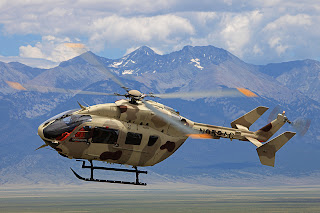 |
| AH-6I |
 |
| AAS-72X |
 |
| AAS-72X |
 |
| AAS-72X |
 |
| OH-58II |
 |
| OH-58II |
 |
| OH-58 II |
The Armed Scout Helicopter competition is a tale of three companies. Two of those companies have the savy, have the knowledge of "publicity" and the modernity to realize that information on their products will help in the arena of public debate. One company is a dinosaur. Lost in the days when newspapers led the way and everyone sat in front of the TV to hear Walter Cronkite.
As much as I pound on EADS and Euro Copter they're doing it right. They're claiming market share on the civilian side of the market in the US and they're trying real hard to get into the military market here in a big way.
Bell Helicopter is a leader in the industry and has several projects its leading on. Its well established with the Department of Defense with its current offerings being the current Scout Helicopter, the AH-1Z, the UH-1Y and the V-22. Its maintaining market share in the civilian market with its offerings there.
Boeing is a dud. Its biggest military claim to fame is the F-15, its partnership with Bell on the V-22 and its Chinook helicopter.
But its playing the game old school. This time old school isn't good school.
I wanted this post to be a description of the three contenders for the contract after watching Trimble's video on the AH-6I that he posted today.
I can't do that. No information is publicly available on the AH-6I except from "established sources"...I won't play that game.
Check out the websites of the two companies that actually do care enough to make their information available to us lowly bloggers and those that happen to read them.
Websites you should check out.
























